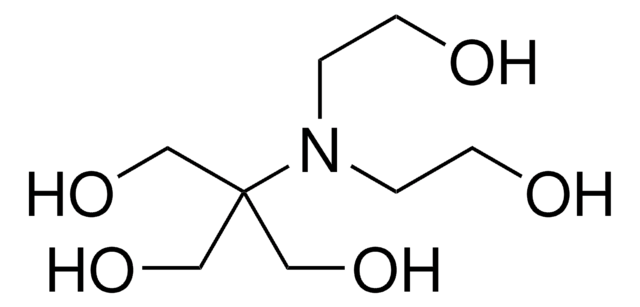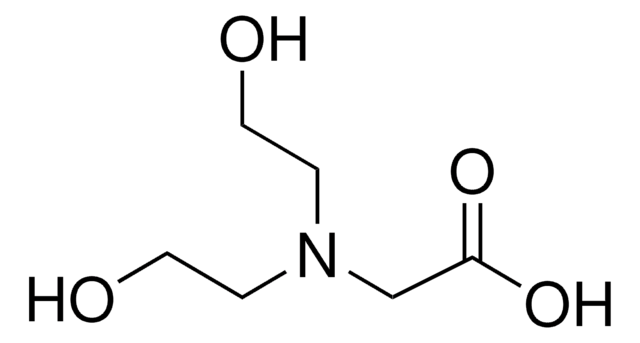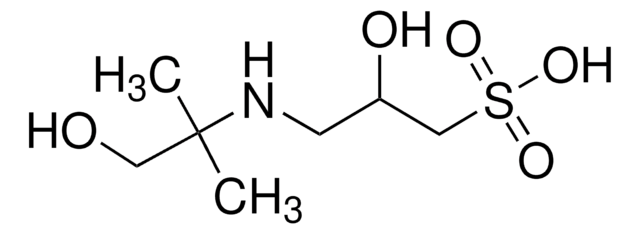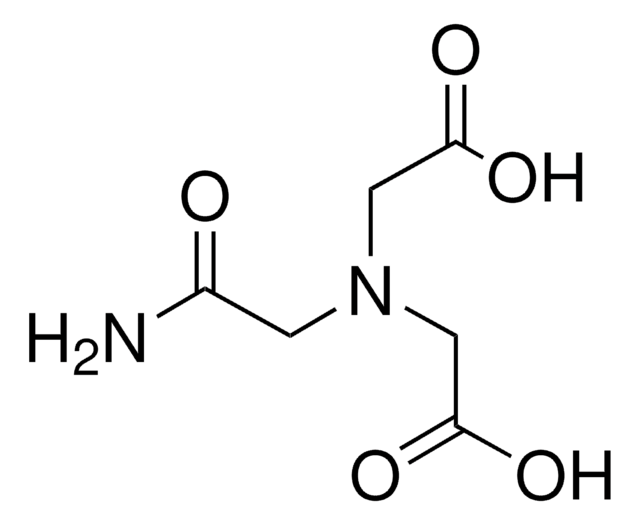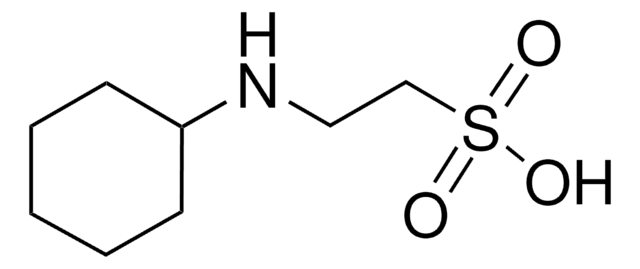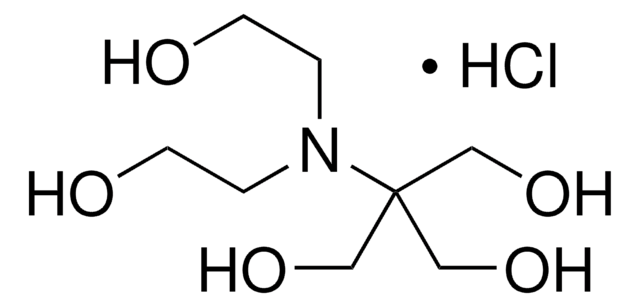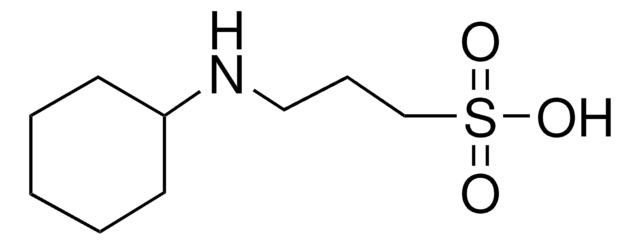B6755
BIS-TRIS propane
≥99.0% (titration)
Synonym(s):
1,3-Bis[tris(hydroxymethyl)methylamino]propane, 2,2′-(Propane-1,3-diylbis(azanediyl))bis(2-(hydroxymethyl)propane-1,3-diol)
About This Item
Recommended Products
Quality Level
assay
≥99.0% (titration)
form
powder
storage condition
dry at room temperature
technique(s)
HPLC: suitable
color
white
useful pH range
6.3-9.5
pKa (25 °C)
(1) 6.8, (2) 9.0
mp
164-165 °C (lit.)
solubility
water: 30 % (w/w), clear, colorless
density
1.179 g/cm3 at 20—25 °C
1.189 g/cm3 at 20—25 °C
suitability
suitable for chromatography
suitable for electrophoresis buffers
application(s)
diagnostic assay manufacturing
general analytical
life science and biopharma
storage temp.
room temp
SMILES string
OCC(CO)(CO)NCCCNC(CO)(CO)CO
InChI
1S/C11H26N2O6/c14-4-10(5-15,6-16)12-2-1-3-13-11(7-17,8-18)9-19/h12-19H,1-9H2
InChI key
HHKZCCWKTZRCCL-UHFFFAOYSA-N
Looking for similar products? Visit Product Comparison Guide
General description
Furthermore, Bis-Tris Propane is a water-soluble buffer substance that plays a crucial role in enhancing the stability and activity of restriction enzymes. Specifically, its buffering capacity is advantageous for experiments that require pH levels as low as 6-7. When compared to Tris buffer, which has a poor buffering capacity below pH 7.5 and exhibits significant pKa fluctuations with temperature changes, Bis-Tris Propane proves to be a superior choice. Additionally, it finds application in conjunction with hydrochloric acid buffer to stabilize farnesyl diphosphate, particularly when isolated from Saccharomyces cerevisiae strains. Notably, it can also serve as a ligand, forming dinuclear hydroxo complexes with Lanthanides(III).
Application
- as a buffer to investigate the influence of anions with varying nucleophilic properties on the autoxidation of oxymyoglobin (MbO2).
- for purification of glucose-binding protein from membranes of Sulfolobus solfataricus.
- as a buffer during GeO2 mineralisation.
- as a buffer component in a study pertaining to environmental research
- as a buffer component to maintain optimal pH conditions during the purification and preparation of engineered enzymes
Features and Benefits
- Suitable for Biological and Biochemical Research
- Tested to confirm low levels of heavy metal contamination, ensuring suitability for various applications
- Effective Buffering from pH 6.3-9.5 (25 °C) with a pKa of 6.8 and 9.0 (25 °C)
- Highly soluble in water
Other Notes
Storage Class
11 - Combustible Solids
wgk_germany
WGK 3
flash_point_f
Not applicable
flash_point_c
Not applicable
ppe
Eyeshields, Gloves, type N95 (US)
Choose from one of the most recent versions:
Already Own This Product?
Find documentation for the products that you have recently purchased in the Document Library.
Customers Also Viewed
Related Content
dynamic-page-template
Our team of scientists has experience in all areas of research including Life Science, Material Science, Chemical Synthesis, Chromatography, Analytical and many others.
Contact Technical Service
